Abstract
Using two sentinel calf herds, the seasonal incidence of bluetongue in central Sudan was shown to be a predictable event related to the rainy season and to vector population. Seroconversions to bluetongue virus (BTV) were detected only between July and December. Neutralizing antibodies to 16 BTV serotypes (1-10, 12, 14, 17, 20-22) were present in animals from both sentinel herds. The use of a blocking enzyme-linked immunosorbent assay made possible the distinction between infections due to BTV and those due to infections with other orbiviruses. Sera from 13 calves at Shambat and from 17 at Um Benein gave agar-gel tests indicative of BTV infections not attributable to any of the 22 serotypes, suggesting the presence of new serotypes of BTV. Sera from 30 calves gave results interpreted as evidence of infection with BTV-related viruses, rather than BTV serotypes. Comparing these results with those reported from Kenya, we suggest that the pattern of the disease and the types involved are similar in both countries and that the movements of the Intertropical Convergence Zone (I.T.C.Z.) may carry infected midges northwards into the Sudan at the start of the rainy season and southward at the end of this period.
Full text
PDF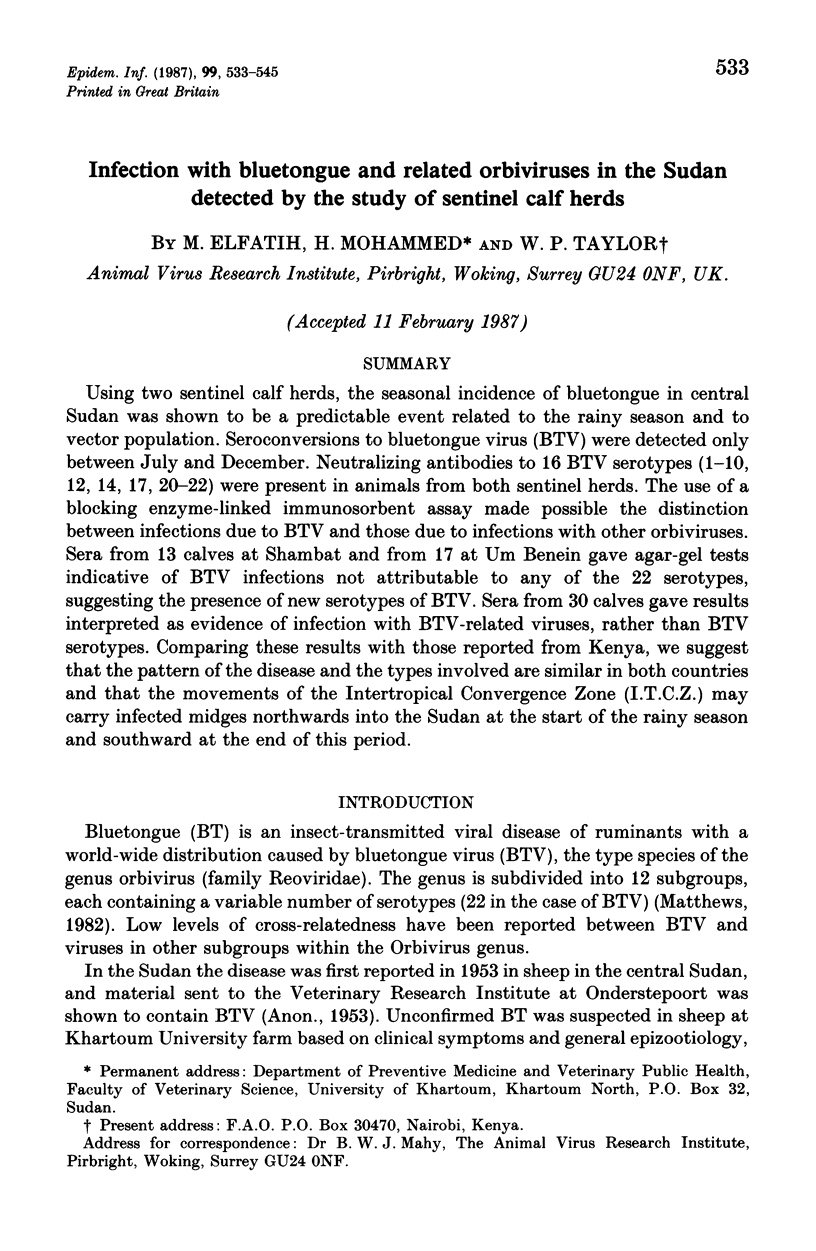
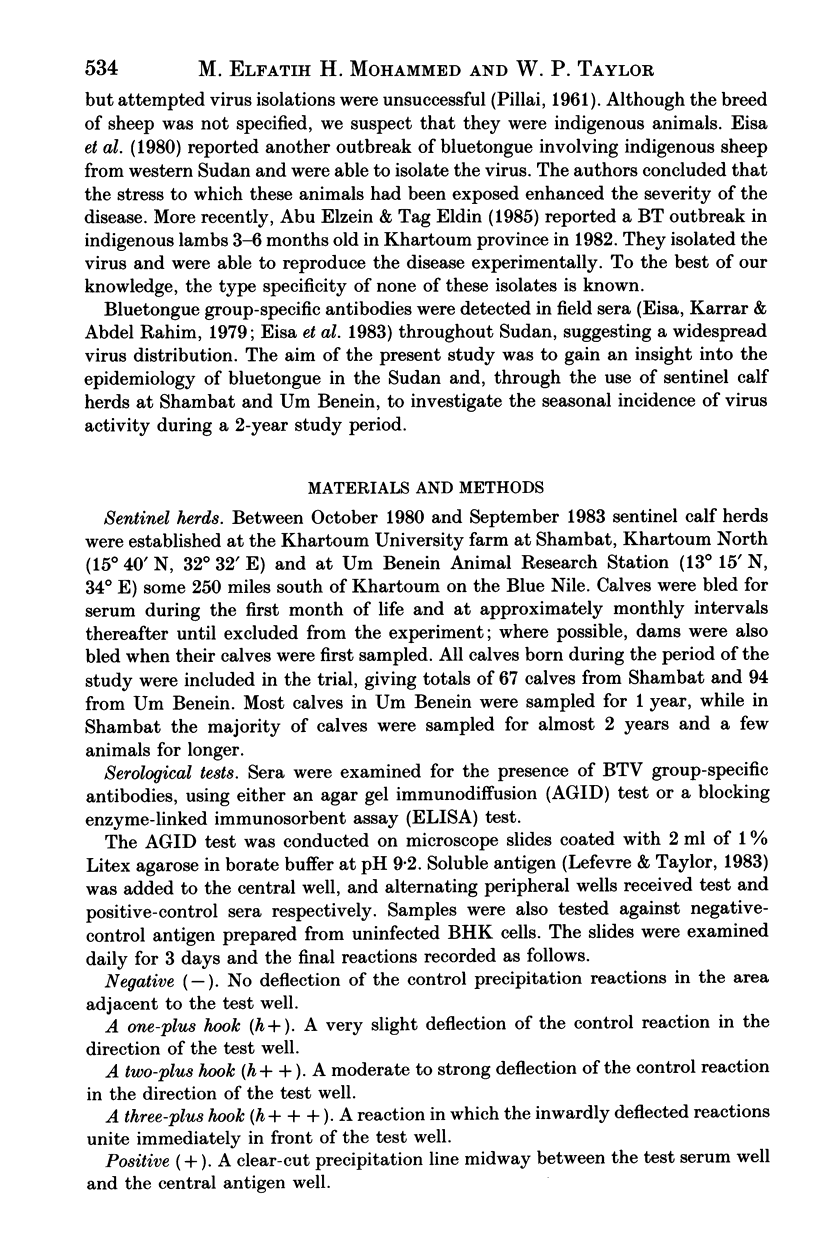
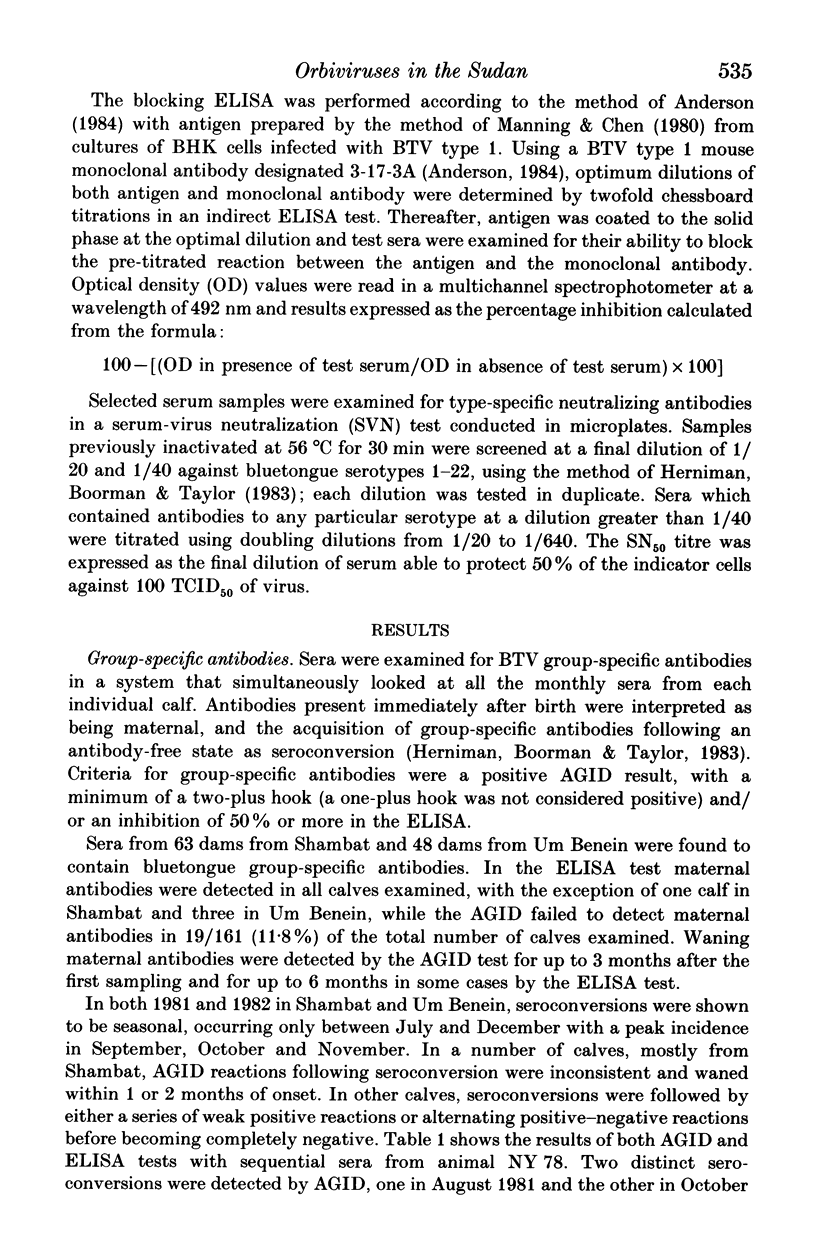
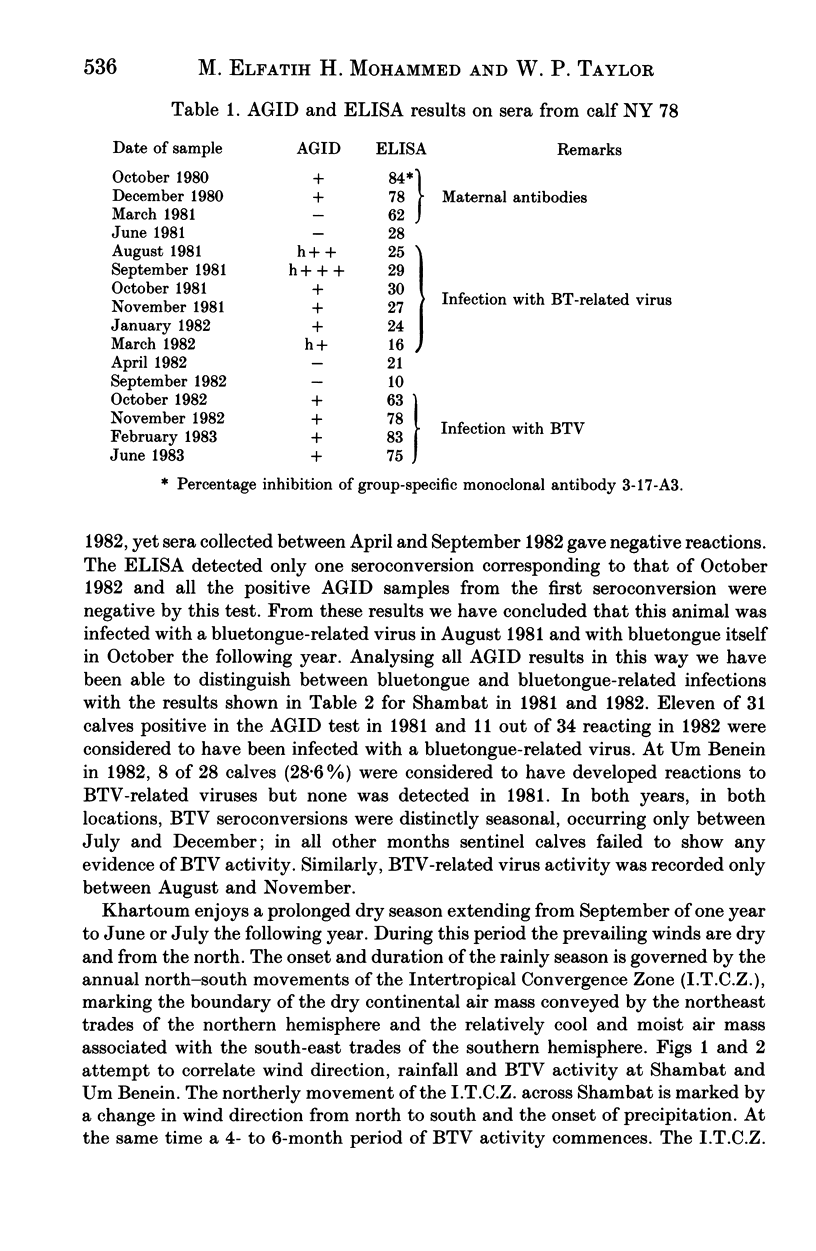
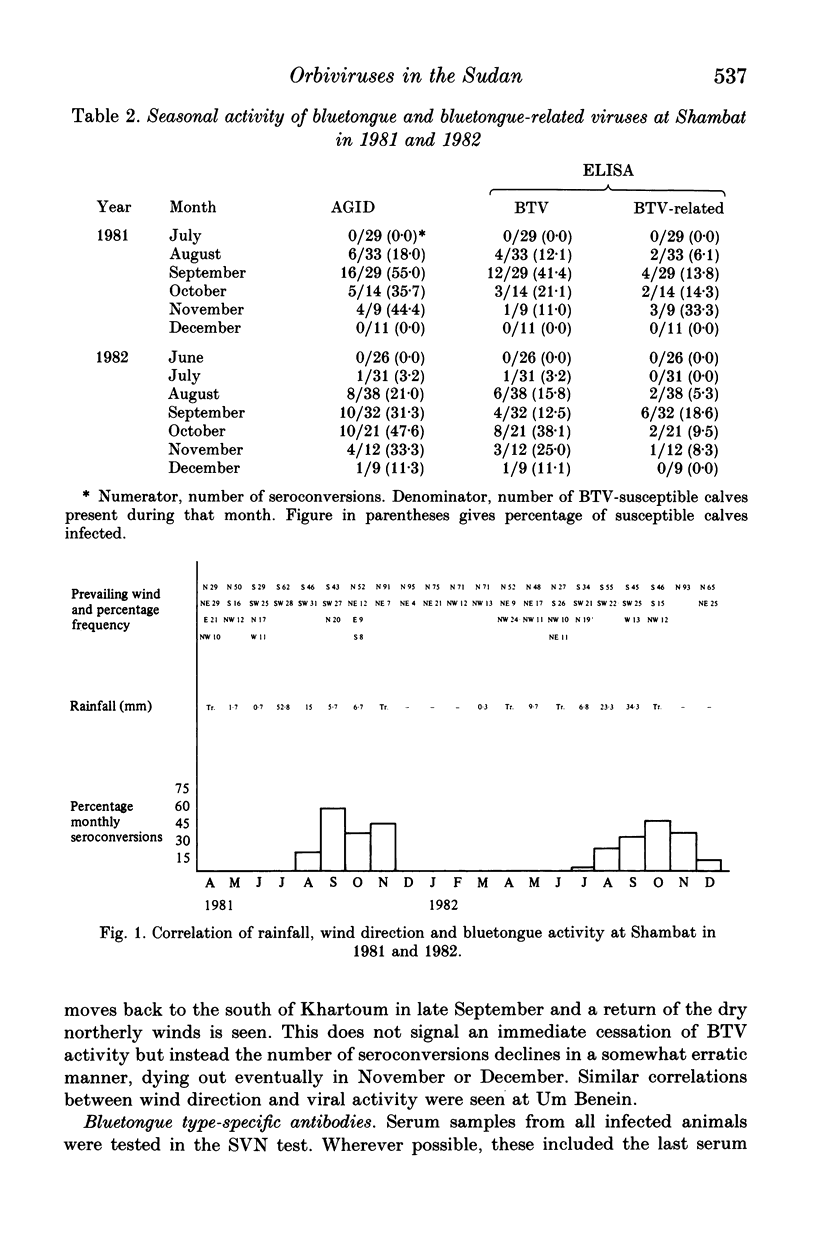
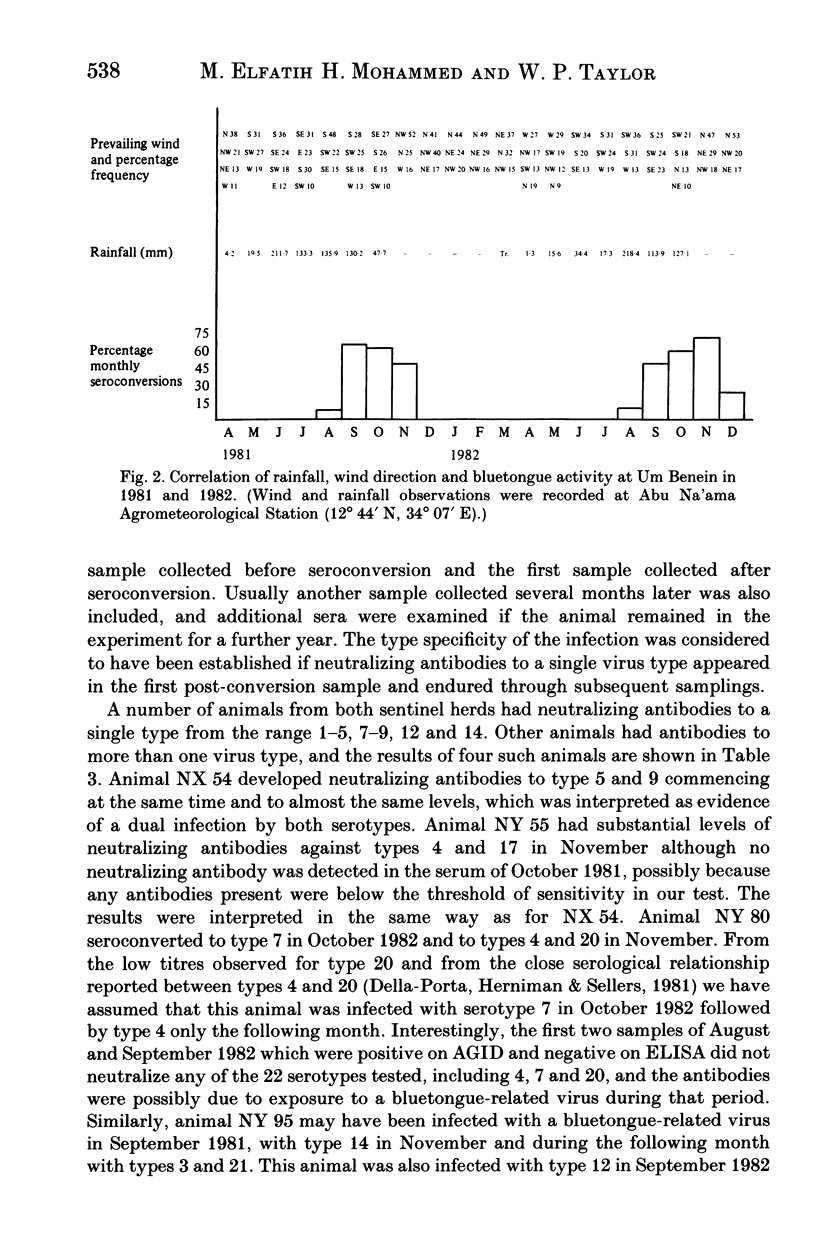
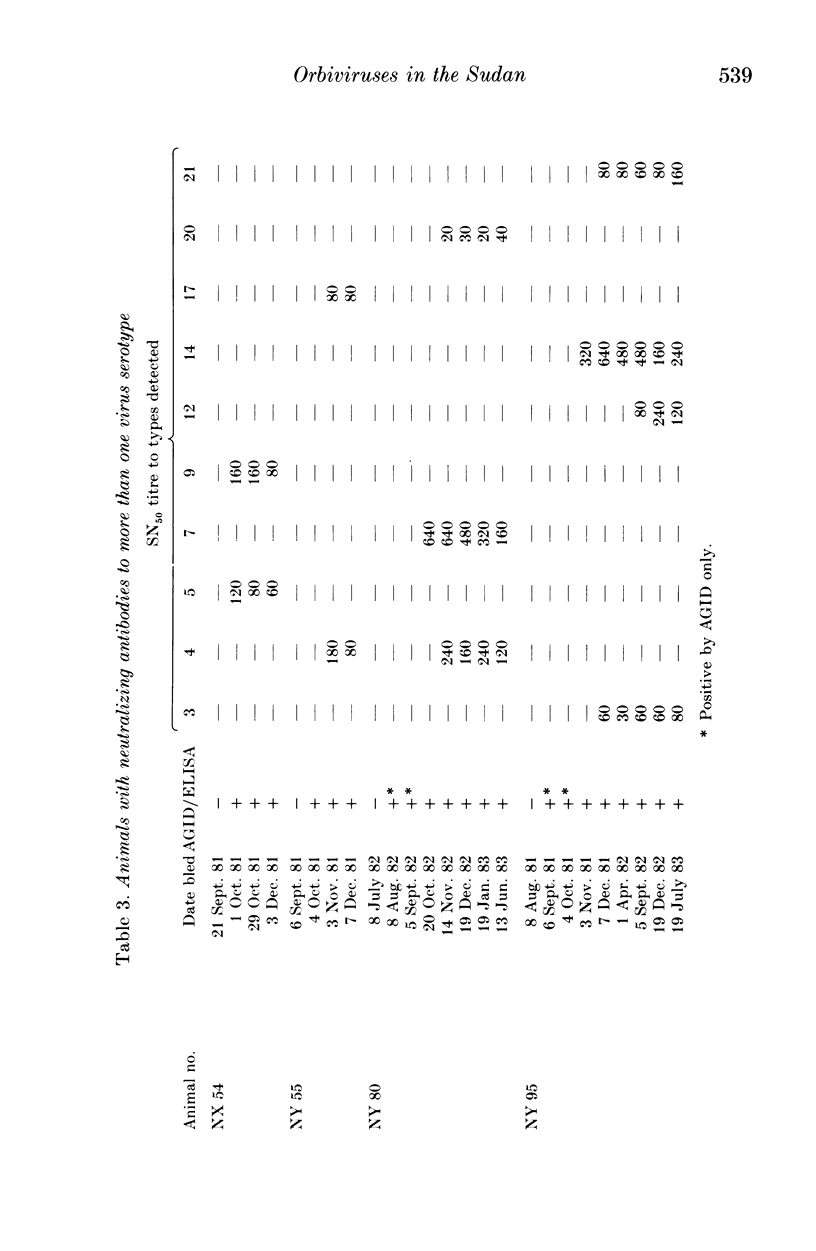
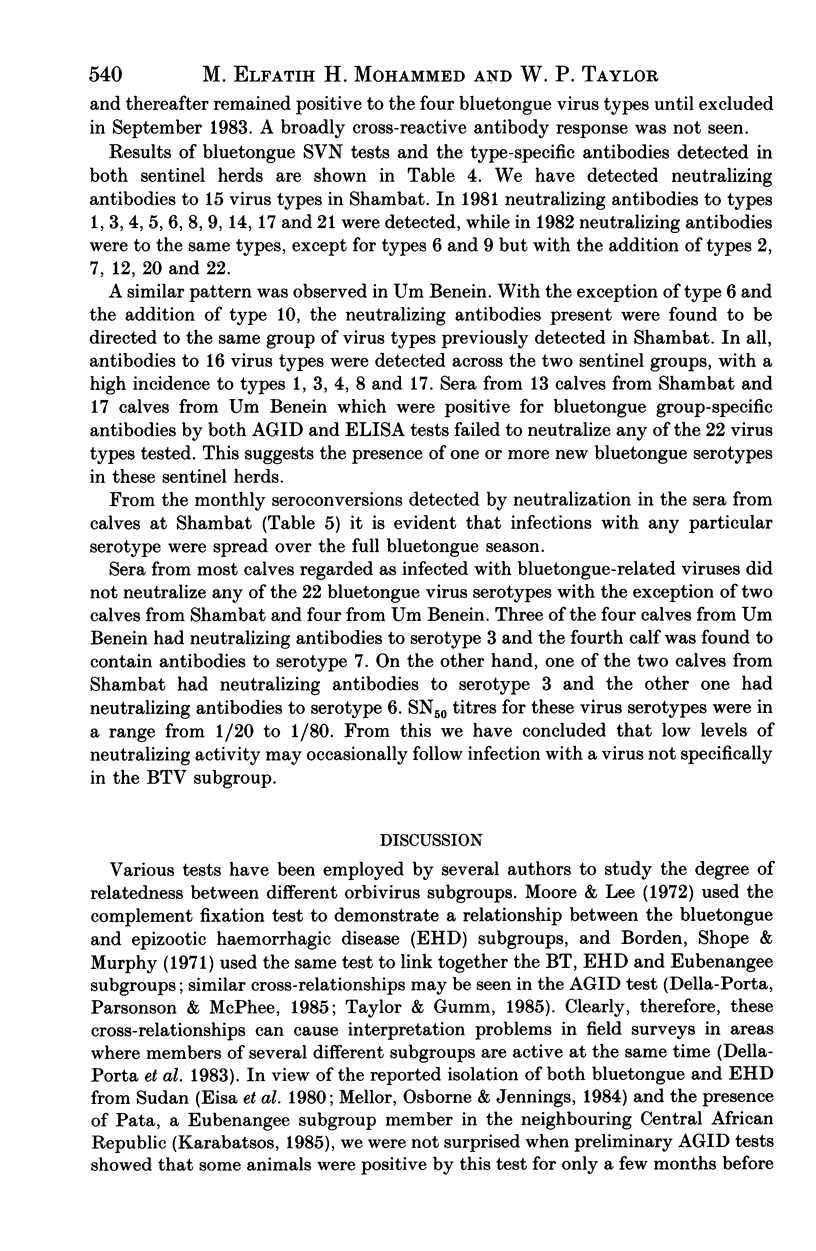
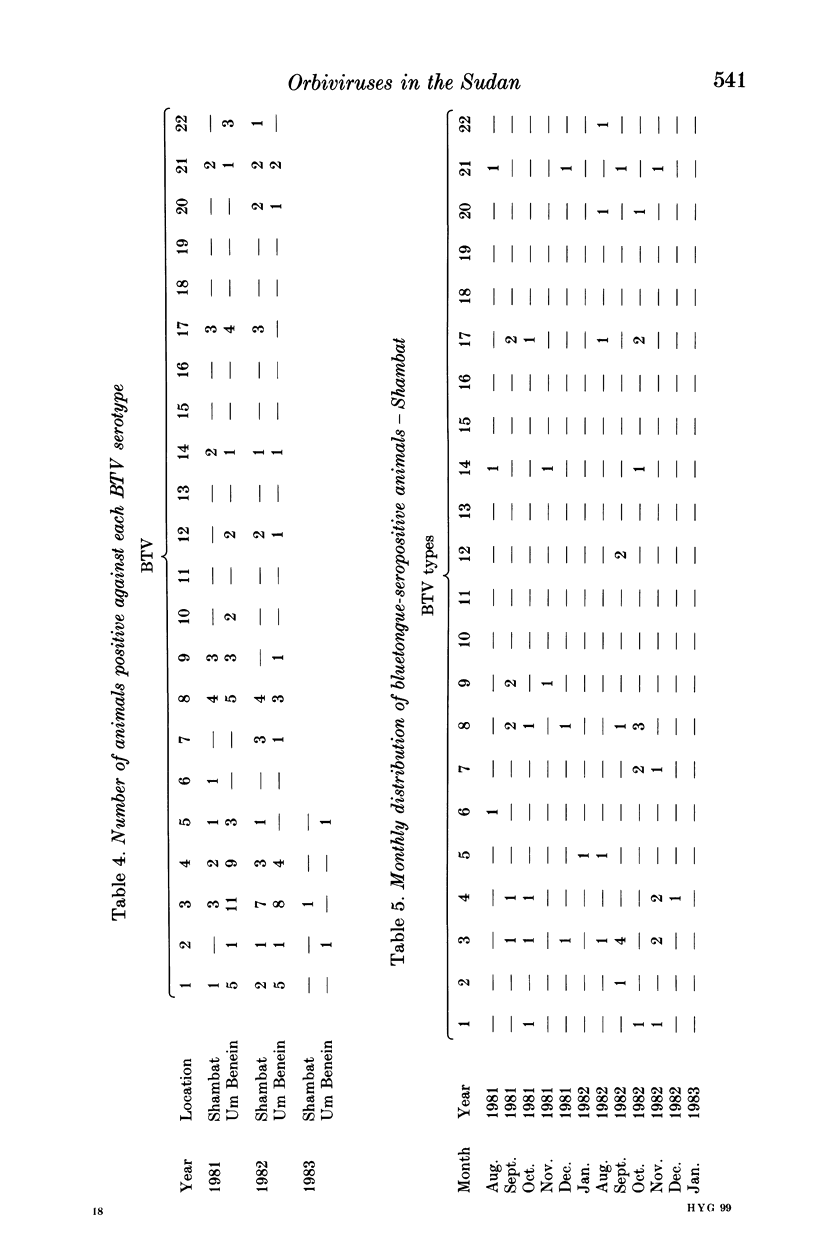
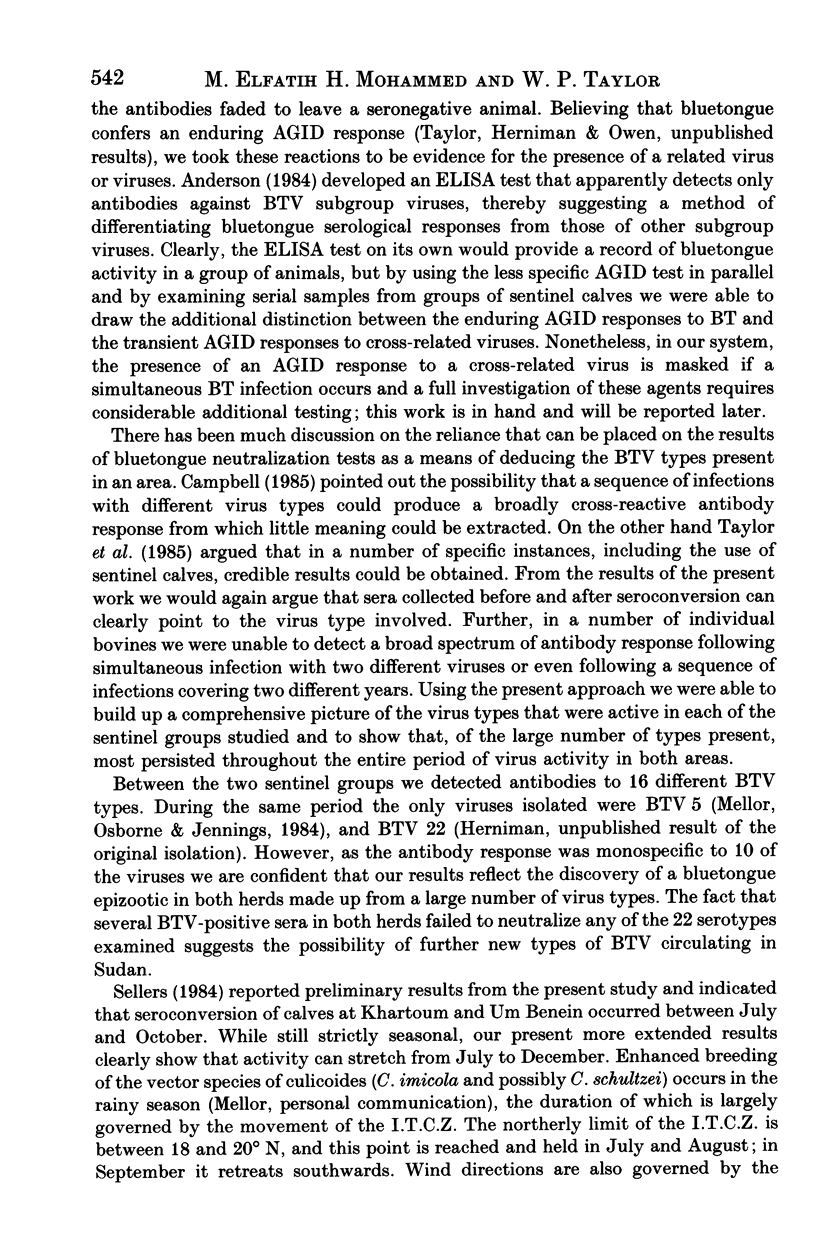
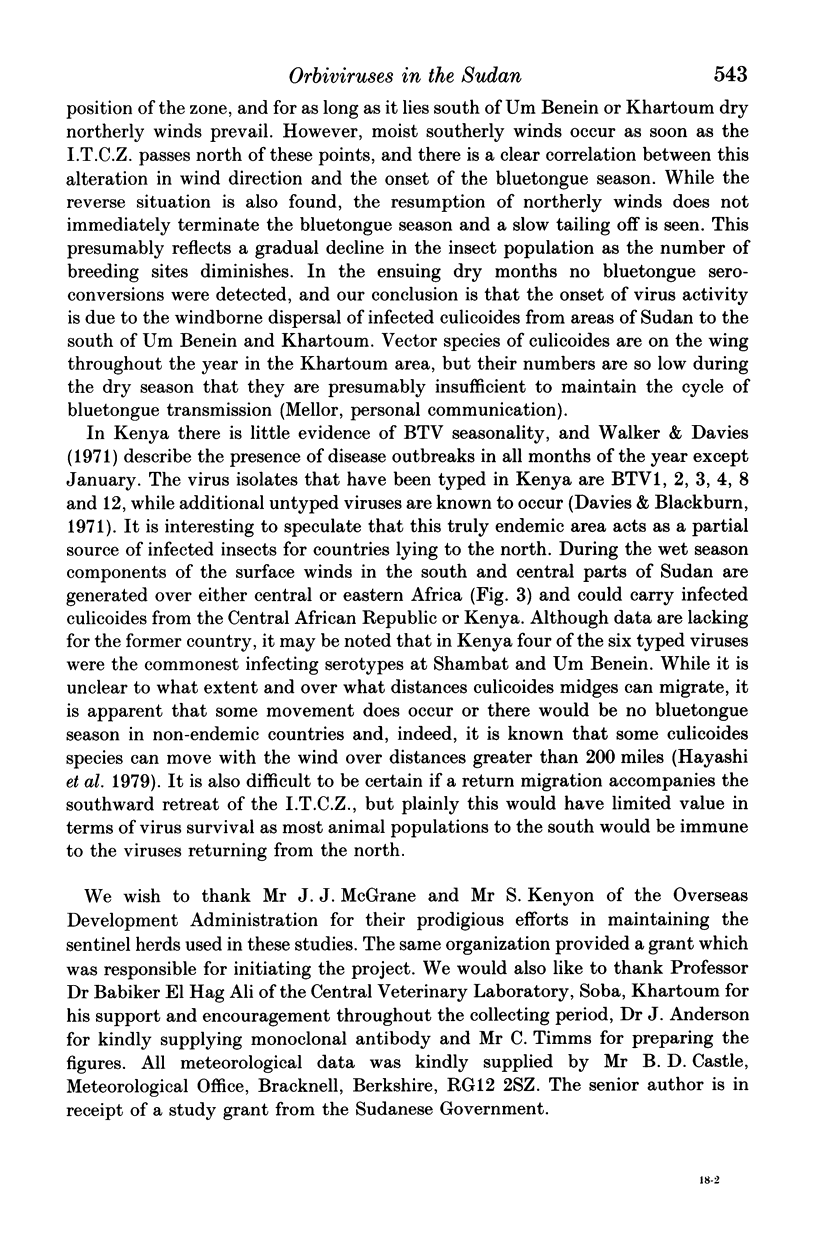
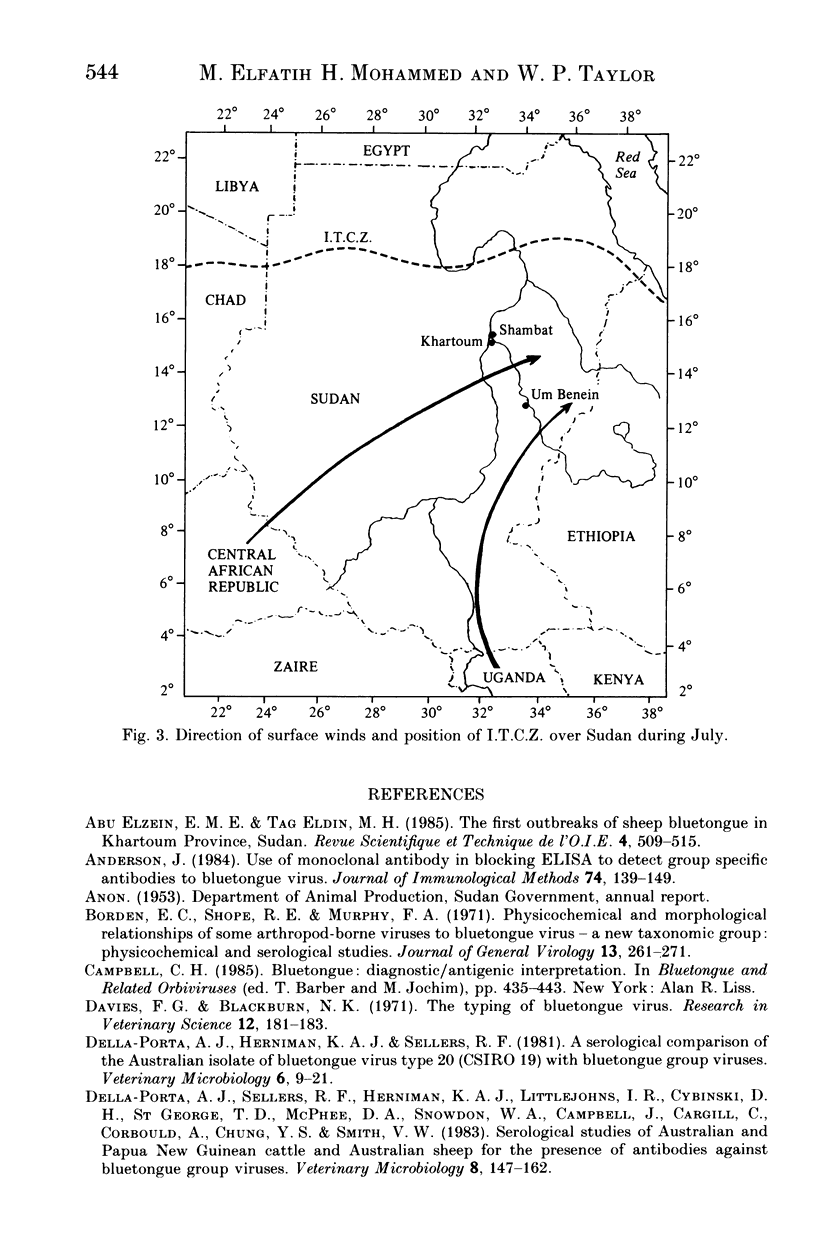
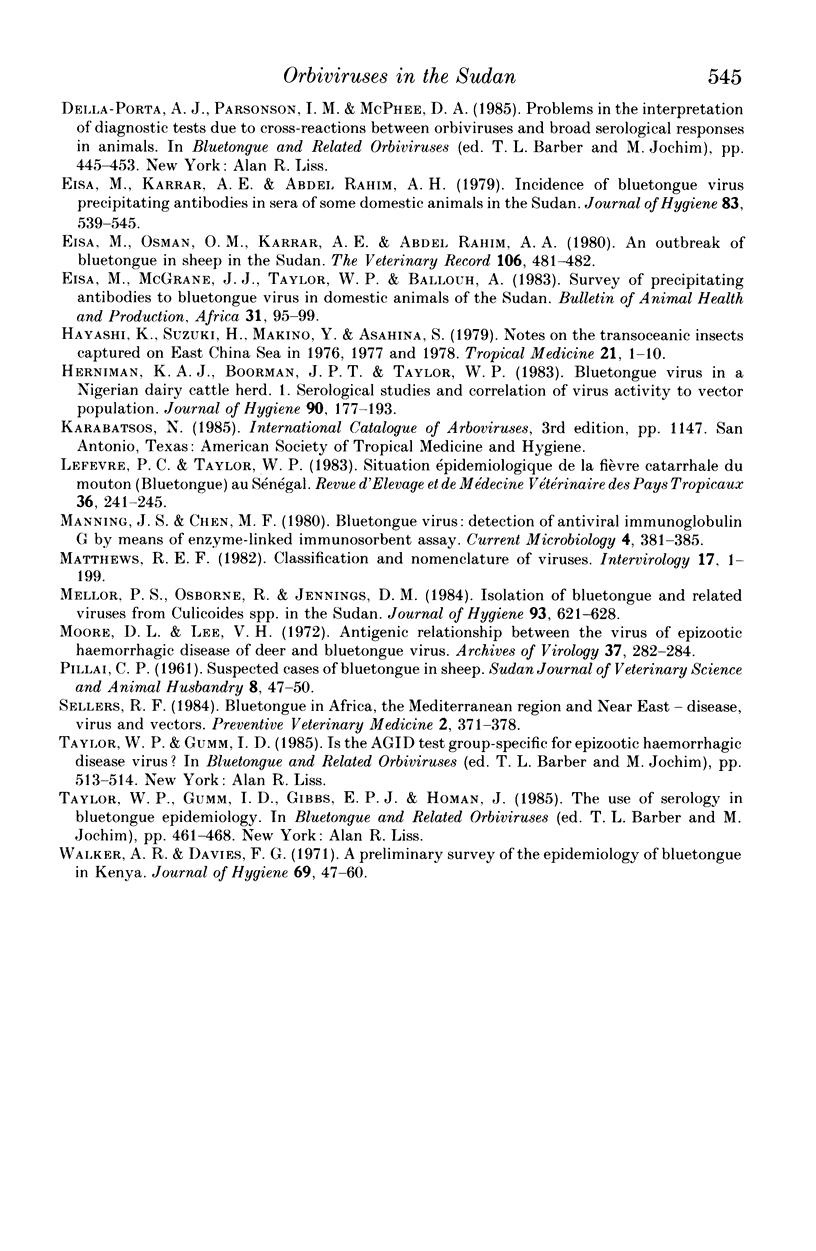
Selected References
These references are in PubMed. This may not be the complete list of references from this article.
- Anderson J. Use of monoclonal antibody in a blocking ELISA to detect group specific antibodies to bluetongue virus. J Immunol Methods. 1984 Nov 16;74(1):139–149. doi: 10.1016/0022-1759(84)90375-2. [DOI] [PubMed] [Google Scholar]
- Borden E. C., Shope R. E., Murphy F. A. Physicochemical and morphological relationships of some arthropod-borne viruses to bluetongue virus--a new taxonomic group. Physiocochemical and serological studies. J Gen Virol. 1971 Nov;13(2):261–271. doi: 10.1099/0022-1317-13-2-261. [DOI] [PubMed] [Google Scholar]
- Campbell C. H. Bluetongue: diagnostic/antigenic interpretation. Prog Clin Biol Res. 1985;178:435–443. [PubMed] [Google Scholar]
- Classification and nomenclature of viruses. Fourth report of the International Committee on Taxonomy of Viruses. Intervirology. 1982;17(1-3):1–199. doi: 10.1159/000149278. [DOI] [PubMed] [Google Scholar]
- Davies F. G., Blackburn N. K. The typing of bluetongue virus. Res Vet Sci. 1971 Mar;12(2):181–183. [PubMed] [Google Scholar]
- Della-Porta A. J., Parsonson I. M., McPhee D. A. Problems in the interpretation of diagnostic tests due to cross-reactions between orbiviruses and broad serological responses in animals. Prog Clin Biol Res. 1985;178:445–453. [PubMed] [Google Scholar]
- Della-Porta A. J., Sellers R. F., Herniman K. A., Littlejohns I. R., Cybinski D. H., St George T. D., McPhee D. A., Snowdon W. A., Campbell J., Cargill C. Serological studies of Australian and Papua New Guinean cattle and Australian sheep for the presence of antibodies against bluetongue group viruses. Vet Microbiol. 1983 Apr;8(2):147–162. doi: 10.1016/0378-1135(83)90062-7. [DOI] [PubMed] [Google Scholar]
- Eisa M., Karrar A. E., Abd Elrahim A. H. Incidence of bluetongue virus precipitating antibodies in sera of some domestic animals in the Sudan. J Hyg (Lond) 1979 Dec;83(3):539–545. doi: 10.1017/s0022172400026395. [DOI] [PMC free article] [PubMed] [Google Scholar]
- Eisa M., Osman O. M., Karrar A. E., Abdel Rahim A. H. An outbreak of bluetongue in sheep in the Sudan. Vet Rec. 1980 Jun 7;106(23):481–482. doi: 10.1136/vr.106.23.481. [DOI] [PubMed] [Google Scholar]
- Herniman K. A., Boorman J. P., Taylor W. P. Bluetongue virus in a Nigerian dairy cattle herd. 1. Serological studies and correlation of virus activity to vector population. J Hyg (Lond) 1983 Apr;90(2):177–193. doi: 10.1017/s0022172400028849. [DOI] [PMC free article] [PubMed] [Google Scholar]
- Lefevre P. C., Taylor W. P. Situation épidémiologique de la fièvre catarrhale du mouton (blue tongue) au Sénégal. Rev Elev Med Vet Pays Trop. 1983;36(3):241–245. [PubMed] [Google Scholar]
- Mellor P. S., Osborne R., Jennings D. M. Isolation of bluetongue and related viruses from Culicoides spp. in the Sudan. J Hyg (Lond) 1984 Dec;93(3):621–628. doi: 10.1017/s0022172400065190. [DOI] [PMC free article] [PubMed] [Google Scholar]
- Moore D. L., Lee V. H. Antigenic relationship between the virus of epizootic haemorrhagic disease of deer and bluetongue virus. Brief report. Arch Gesamte Virusforsch. 1972;37(2):282–284. doi: 10.1007/BF01268013. [DOI] [PubMed] [Google Scholar]
- Taylor W. P., Gumm I. D., Gibbs E. P., Homan J. The use of serology in bluetongue epidemiology. Prog Clin Biol Res. 1985;178:461–468. [PubMed] [Google Scholar]
- Taylor W. P., Gumm I. D. Is the AGID test group-specific for epizootic haemorrhagic disease virus? Prog Clin Biol Res. 1985;178:513–514. [PubMed] [Google Scholar]
- Walker A. R., Davies F. G. A preliminary survey of the epidemiology of bluetongue in Kenya. J Hyg (Lond) 1971 Mar;69(1):47–60. doi: 10.1017/s0022172400021239. [DOI] [PMC free article] [PubMed] [Google Scholar]


